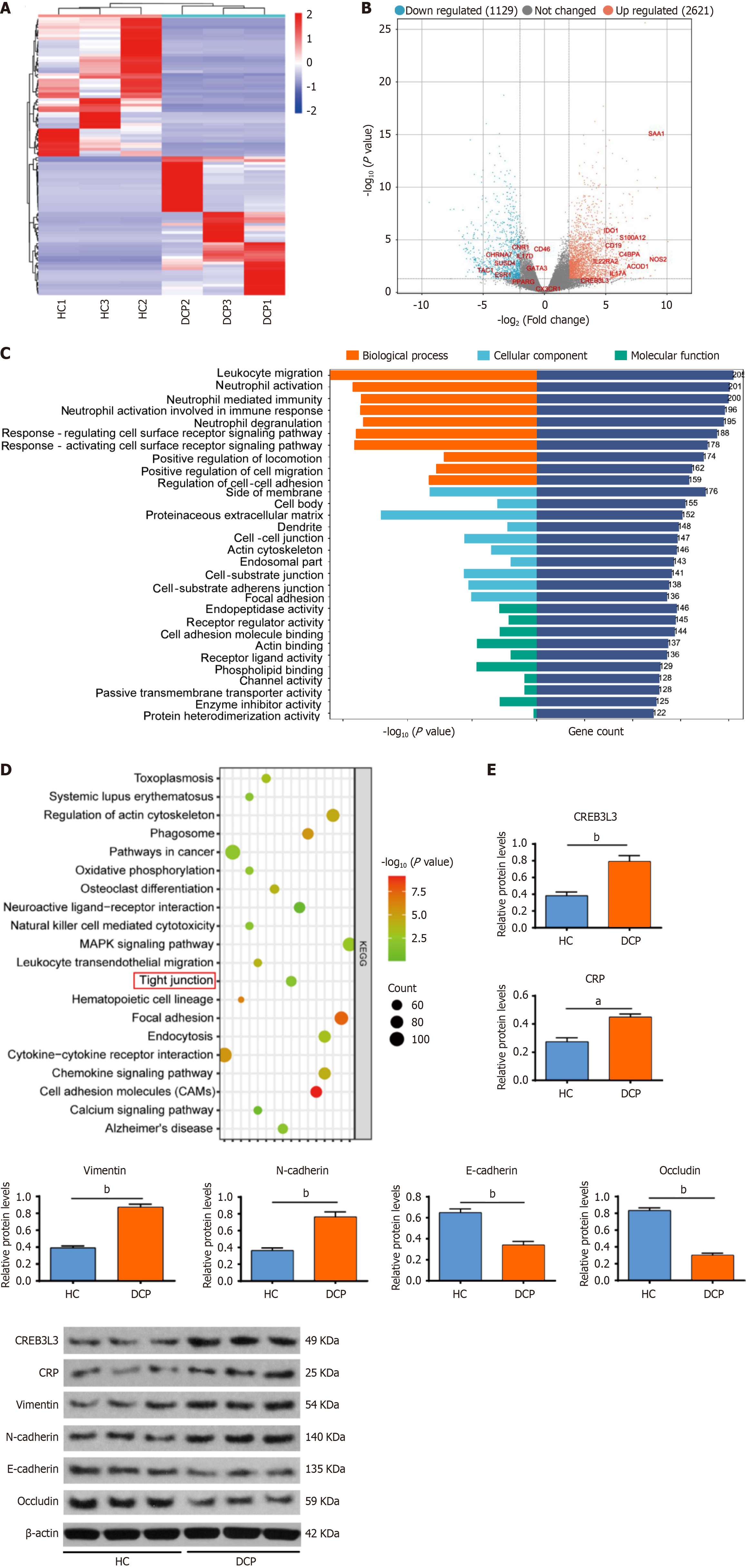Copyright
©The Author(s) 2025.
World J Diabetes. Aug 15, 2025; 16(8): 108101
Published online Aug 15, 2025. doi: 10.4239/wjd.v16.i8.108101
Published online Aug 15, 2025. doi: 10.4239/wjd.v16.i8.108101
Figure 1 Differentially expressed cAMP-responsive element-binding protein 3 Like 3, C-reactive protein, and proteins related to the epithelial-mesenchymal transition and tight junctions in the bladder urothelial tissues of patients with diabetic cystopathy.
Second-generation sequencing was conducted to find genes that are differentially expressed in bladder urothelial tissues between the diabetic cystopathy (DCP) (n = 3) and healthy control (HC) group (n = 3). A: Heatmap of differentially expressed genes (DEGs); B: Volcanic map of DEGs; C: Gene Ontology analysis of the DEGs, including biological process, cellular component, and molecular function; D: Kyoto Encyclopedia of Genes and Genomes analysis of DEGs; E: To identify the results from the second-generation sequencing, we performed western blotting to detect the protein expression of bladder urothelium from the DCP group (n = 6) and HC group (n = 6). aP < 0.01 vs HC group, bP < 0.01 vs HC group. CRP: C-reactive protein.
- Citation: Wu QG, Zhang MJ, Lan YB, Ma CL, Fu WJ. Hyperglycemia-induced overexpression of CREB3 L3 promotes the epithelial-to-mesenchymal transition in bladder urothelial cells in diabetes mellitus. World J Diabetes 2025; 16(8): 108101
- URL: https://www.wjgnet.com/1948-9358/full/v16/i8/108101.htm
- DOI: https://dx.doi.org/10.4239/wjd.v16.i8.108101









